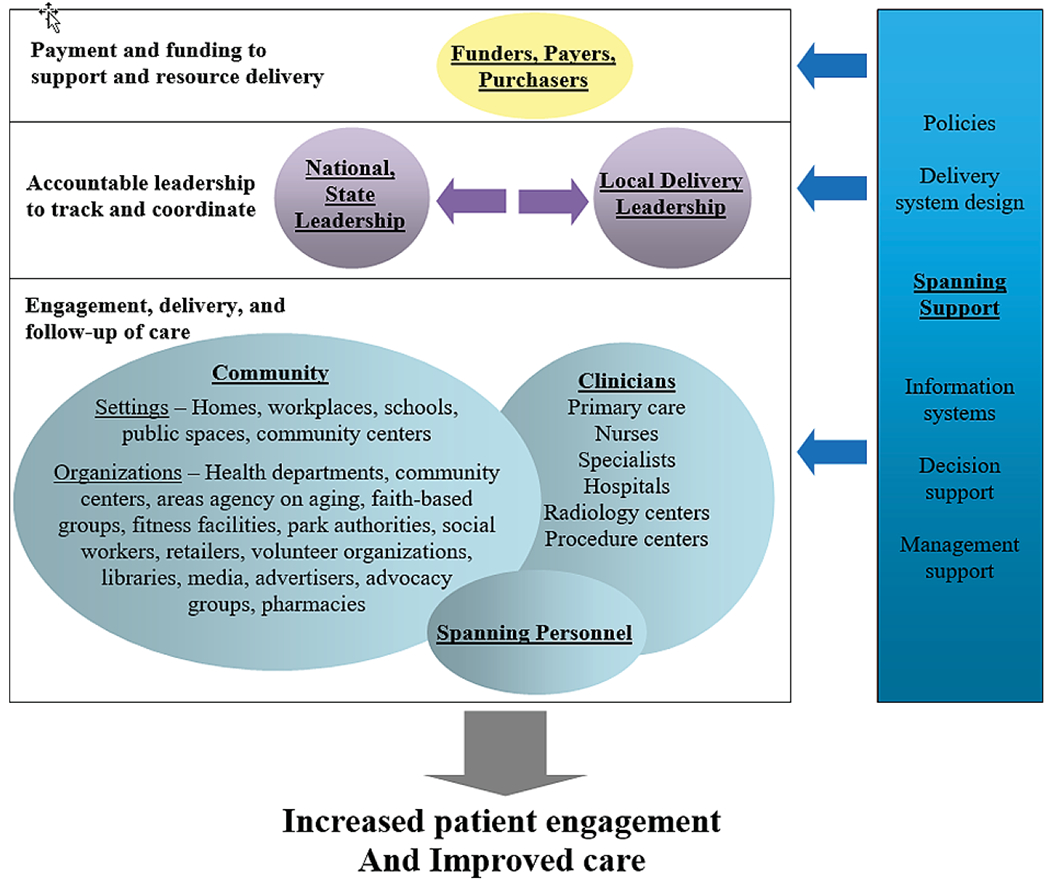Fig. 2.

A Framework for How Clinical Practices and Community Programs Can Partner to Better Engage Patients in Care. A framework depicting how funders, policy makers, communities, and clinicians can work together with the support of personnel and infrastructure to link the care delivery systems. Funders, payers, and purchasers are tasked with financing the infrastructure needed to support integrating the clinical and community care systems. National and state leadership are empowered with the authority, resources, and responsibility to foster integrations across regions. Local leaders are the regional organizations that step forward to oversee and support local tailoring and integration activities. Community is the setting where individuals live work, and play and where the stakeholders who serve them are located. Community organizations are care providers that deliver the community elements of a clinical-community integration. Clinicians are care providers that deliver the clinical elements of a clinical-community integration. Spanning personnel are staff who specialize in helping people traverse the clinical and community settings to obtain care. Spanning support (which includes policies, delivery system design, information systems, decision support, and management support) are essential ingredients to support integrations at all levels depicted in the framework (modified from [41]).
